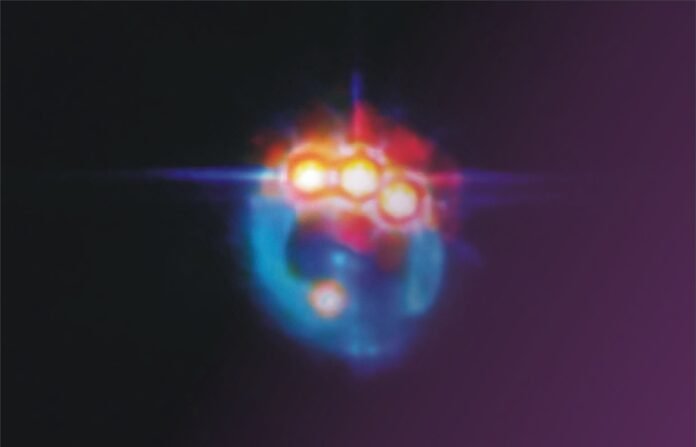The European Space Agency’s James Webb Space Telescope discovered a space marvel. RX J1131-1231, a quasar in Crater, is six billion light years away. This quasar, which resembles a jewel-like ring, captivates astronomers and admirers.
RX J1131-1231’s championship-ring-like appearance with three light spots on a circular frame intrigues. Gravitational lensing, which occurs when a nearby galaxy bends and magnifies light from distant astronomical objects, is the cause of this breathtaking sight.
The gravitational pull of another galaxy between the quasar and Earth bends its light from a supermassive black hole at its center. The bright spots in the image are the result of this bending effect, creating the illusion of many quasar images, while the ring-like structure depicts the deformed intervening galaxy.
Astronomers need gravitational lensing, despite its apparent misrepresentation. Researchers can see faint and distant items that might otherwise be obscured. For instance, analyzing quasars like RX J1131-1231’s x-ray emissions reveals supermassive black holes’ spinning speed and creation processes, which are crucial to understanding the universe’s evolution.
These data also aid in the study of dark matter, a mysterious component that makes up most of the cosmos. Astronomers use quasars as cosmic laboratories to study dark matter using the James Webb Telescope’s sophisticated Mid-Infrared Instrument (MIRI).
RX J1131-1231’s majestic beauty and deep understanding of the universe’s workings demonstrate the revolutionary power of advanced space exploration tools in solving cosmic mysteries.



